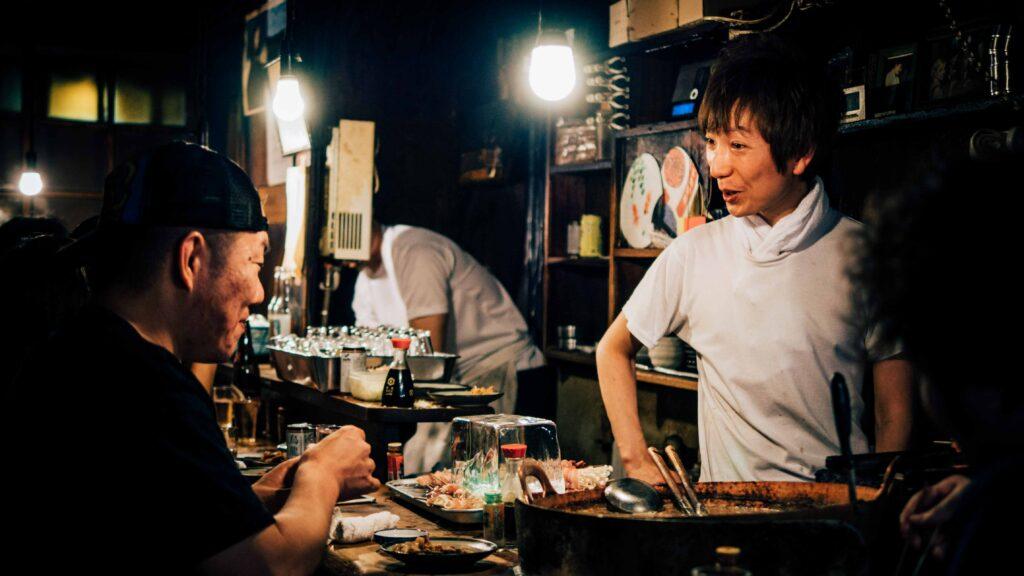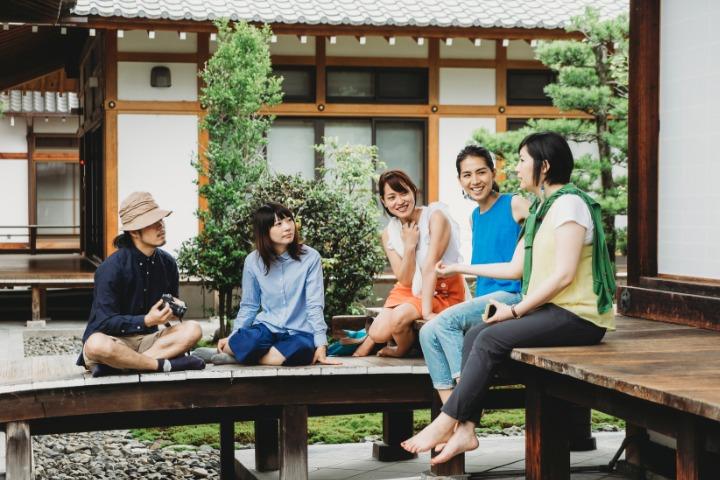Linguistic politeness is an intriguing component of cross-cultural communication that differs significantly among people. In Japan, the concept of politeness has become embedded in society and is essential for good interpersonal relationships. It is motivated by a sincere desire to promote social harmony, uphold hierarchical systems, maintain face, show empathy, and uphold cultural norms. Understanding the nuances of Japanese linguistic politeness offers valuable insights into the vibrant cultural legacy and social dynamics of the nation. As the Japanese are well-known for their exceptional respect and kindness, learn more about how they express it in everyday life or fictional dramas, and see what new perspectives people gain as they study this kind of way of life.
Politeness in Japan

Image Credit: Lan Pham via Unsplash
Social cohesion, harmony, and respect serve as the cornerstones of Japanese culture. They do not see politeness as a superficial expression towards certain people. Instead, they see it as a deeply ingrained cultural value that signifies respect, care, and a commitment to social harmony. The concept of “Wa,” or harmony, governs interpersonal interactions and inspires people to behave in a way that promotes harmony and prevents conflict. Regardless of someone’s social standing or position, the Japanese have a strong respect for others. One demonstrates this value by being continuously polite, well-mannered, and considerate. Their desire to be courteous toward others comes from a sincere wish to value them and support their well-being.
Japanese people uphold respect through language by following social structures that help them navigate their interactions with different people. This can be further understood by looking at the societal structures of “Superior v. Inferior” and “Inside v. Outside”. The concept of Superior (目上 meue) and Inferior (目下 mesh) is significant in social interactions, including those at work, school, and in sports environments. These ideas define the societal and cultural standards that interactants heavily rely on, sending hints to one another about what is and is not acceptable during an encounter.
They have a significant impact on how Japanese speakers communicate and behave in social situations. In addition to a hierarchical structure, Japanese society also functions within an internal and external relationship framework. The Inside (内 uchi) describes a person’s inner social circle, which includes intimate friends, family, and coworkers, while the Outside (外 soto) describes a person’s outer social circle, which includes members of various social groupings.
Interactants must always choose a language form that accurately reflects both the speaker’s position within the systems and the communication’s actual context.
Japanese Conversations and the Politeness Theory
When engaging in a conversation, the Japanese take into account several factors, either consciously or unconsciously. It assists them choose the format of their speech. The factors referred to as “face” are defined as “the positive social value that a person effectively claims for themselves by the stance that others assume they have taken during a specific contact.”

Image Credit: Guidable
A thorough and, in their opinion, universal theory of politeness was put forth by Brown and Levinson in 1978. It utilizes Goffman’s idea of “face” as a starting point. Since then, scholars have worked to improve the definition of the face. Therefore, to modify this politeness theory to determine the question of whether the definition – and hence, the theory – is universal.
Cheerful faces and negative faces are two concepts related to self-image and social interaction in the context of Japanese etiquette. They are concepts that explain people’s needs and desires concerning their independence and interpersonal relationships.
The desire for membership, affiliation, and acknowledgement within a social group is related to a positive face. It includes the desire to be respected, loved, and accepted by others. Japanese people maintain positive face by being thoughtful, empathetic, and respectful of the person’s autonomy and social status. Maintaining a positive reputation in Japanese society involves using polite language, paying attention, and refraining from activities that can threaten or disgrace others. Positive face places a focus on establishing rapport, encouraging harmonious relationships, and maintaining social ties.
On the other hand, a negative face describes a person’s yearning for autonomy, freedom, and independence. It relates to the need to uphold one’s right to freedom of choice, privacy, and personal space. People in Japan maintain a negative face by upholding personal limits, refraining from imposing, and giving others the ability to make judgments. Giving people their space, staying out of people’s personal affairs. Futhermore letting people preserve their dignity and autonomy are all examples of being polite. Thus, the idea of the negative face emphasizes the value of personal autonomy and initiative in social relationships.
Japanese speakers do have facial wants, much like individuals from other cultures. They are aware that both themselves and the other interlocutor(s) have positive and negative face wants. In other words, people typically want their freedom from restrictions. It is for their self-image to be valued and approved by others in society. They make sure to act appropriately verbally and nonverbally by their discernment (Yakima) in realizing their relationship and role in society (Tachibana).
What makes the Japanese language and culture unique is that speakers pay attention to and try to fulfil the other’s facial wants. It includes both positive and negative faces. At the same time, they maintain their positive face but rarely assert their negative face. Especially when the other participant in the interaction has less power and is in a lower social position.

Image Credit: Asian Wiki
Face, through language dynamics, can be observed by audiences even in Japanese drama. One great example would be the interaction of characters in the show “Kare, Otto, Otoko Tomodachi” (“Boyfriend, Husband, Male Friend”) as seen in the following lines:
Haruko: Konnichiwa. (Hello.)
Tada: Hajimemashite. (How do you do?)
Haruko: Hajimemashite. (How do you do?)
Asako: Tada-san, watashi no imooto desu. (Mr. Tada, this is my younger sister.)
Tada: Imooto-san. O-shigoto wa? (Your younger sister. What is your job?)
Haruko: Etto… ibento puranna desu. (Umm… event planner.)
Tada: Ibento puranna. Sugoi desu ne. (Event planner. What a great job that is.)

Image Credit: Dorama World
This conversation reveals the change of approach that Haruko and Asako had to deal with when Kunikawa Tada suffered amnesia. Due to his amnesia, Tada’s linguistic behaviour changes. It indicates that he is unaware of the other people he is speaking to. Consequently considering their relationship to be external (soto). It also demonstrates that he wants to keep up a positive front and a favourable self-image. For that reason, he chooses honorific and courteous terms to reflect how he interprets social interaction under social norms.
Although Japanese dramas can have exaggerated or dramatic scenes, they frequently feature genuine depictions of manners and cultural values. By observing Japanese manners in this type of cultural element, one can gain insights into the cultural intricacies and displays of politeness in daily interactions.














































